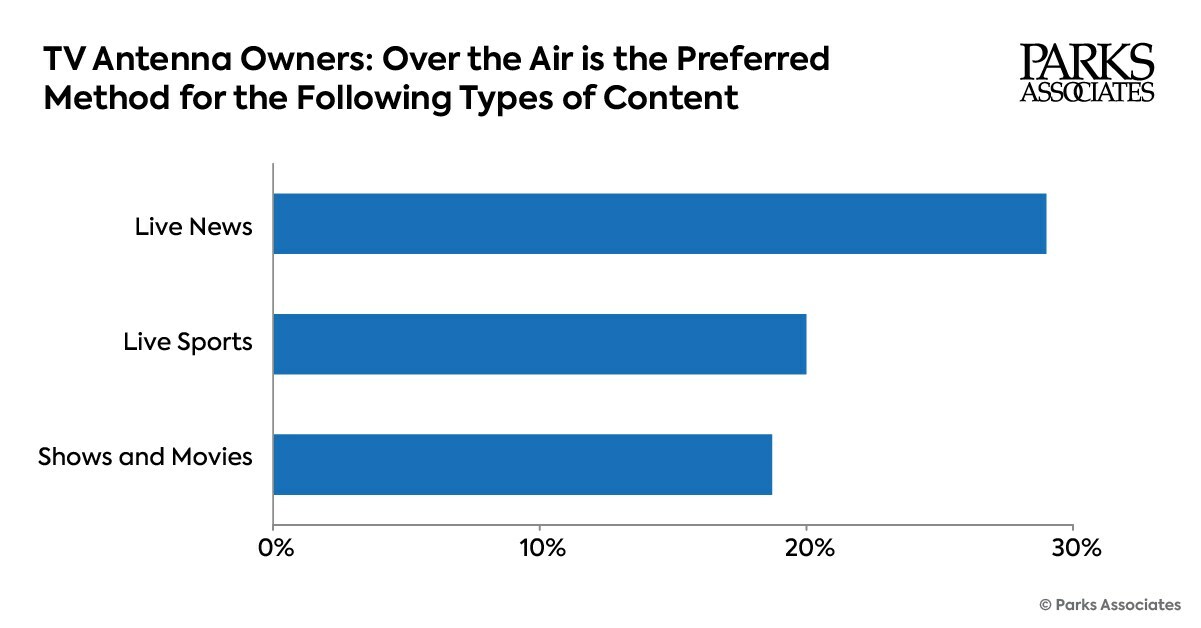20% of US internet households own a TV antenna, and 12% plan to buy one
Thursday, December 7th, 2023
Parks Associates: 20% of US Internet Households Own a Television Antenna, and 12% Plan to Buy One
- Industry report presents a focused analysis of the impact of ATSC 3.0 on the video market
DALLAS — Parks Associates, the premier technology research firm, recently released the industry report “ATSC 3.0: Impact and Opportunity for Video Services,” which reveals that 20% of US internet households own a television antenna and 12% don’t have an antenna but plan to purchase one in the next six months.

“The percentage of antenna owners has remained steady over the last few years, creating a stable audience for broadcasters at a time when they are losing revenues from lost retransmission fees as consumers abandon pay TV for streaming services,” said Alan Bullock, Sr. Contributing Analyst, Parks Associates. “ATSC 3.0 has the potential to pump new life into broadcast TV.”
According to Parks Associates research, TV antenna owners report watching about 6.4 hours of over-the-air (OTA) programming per week, second only to subscription-based video-on-demand streaming (7.6 hours per week). Among nearly 30% of antenna owners, OTA is the preferred method of watching live news, while approximately 20% prefer OTA to watch live sports and TV shows and movies. The ATSC 3.0 standard could improve the experiences for these viewers, and attract new OTA viewers, by enabling higher quality video, enhanced audio, and interactive capabilities.
ATSC 3.0 is built on IP architecture to deliver the next generation of broadcast technology. The standard, labeled as NEXTGEN TV to consumers, allows more revenue-generating advertising opportunities, enables new interactive ads with more precise targeting, and offers new, cost-effective ways to securely distribute data to many recipients.
“ATSC 3.0: Impact and Opportunity for Video Services” details shifting video consumption habits, provides an overview of ATSC 3.0, and profiles leading broadcasters and service providers deploying it today. It also assesses implications for the full video ecosystem, including implications for both traditional and streaming players.
Links: Parks Associates
Latest News
- Barb to start reporting TV-set viewing of YouTube channels
- SAT FILM selects multi-DRM from CryptoGuard
- Qvest and ARABSAT to launch OTT streaming platform
- ArabyAds & LG Ad Solutions partner with TVekstra in Turkey
- Freeview NZ satellite TV service to move to Koreasat 6
- Comscore expands YouTube CTV measurement internationally
